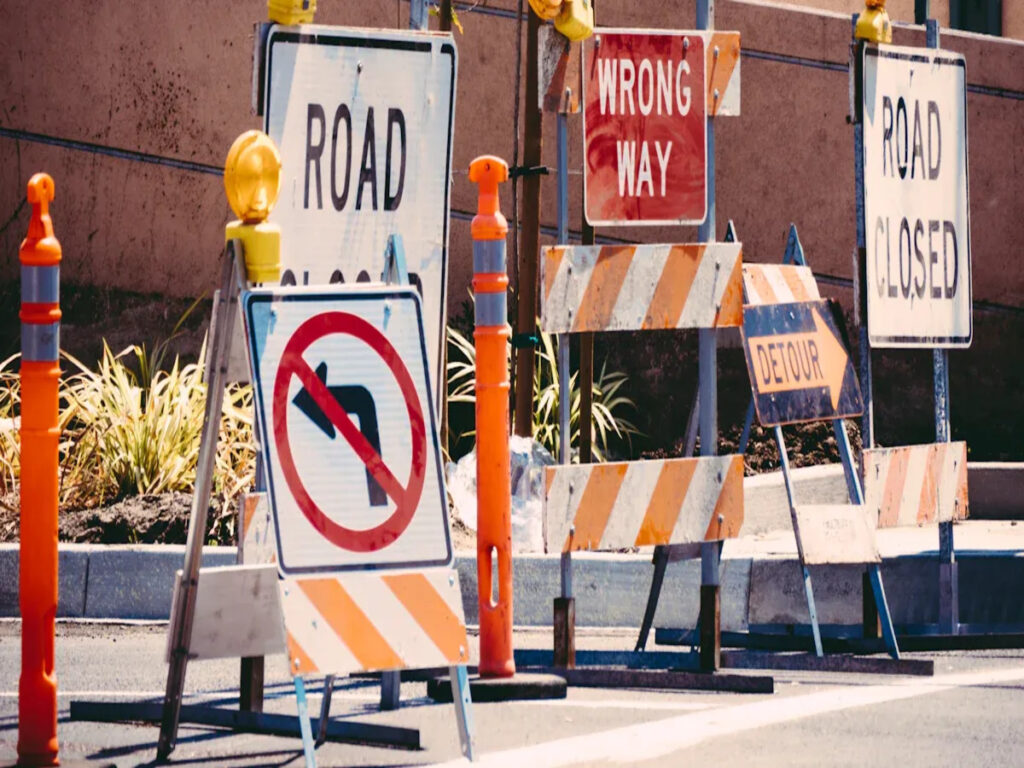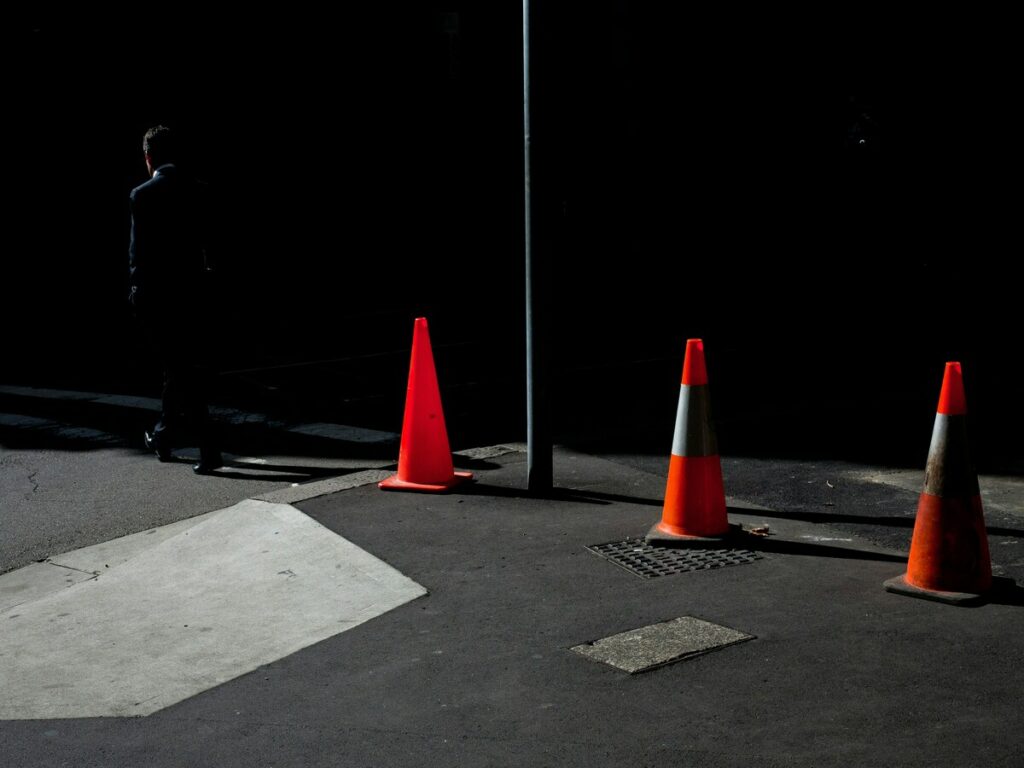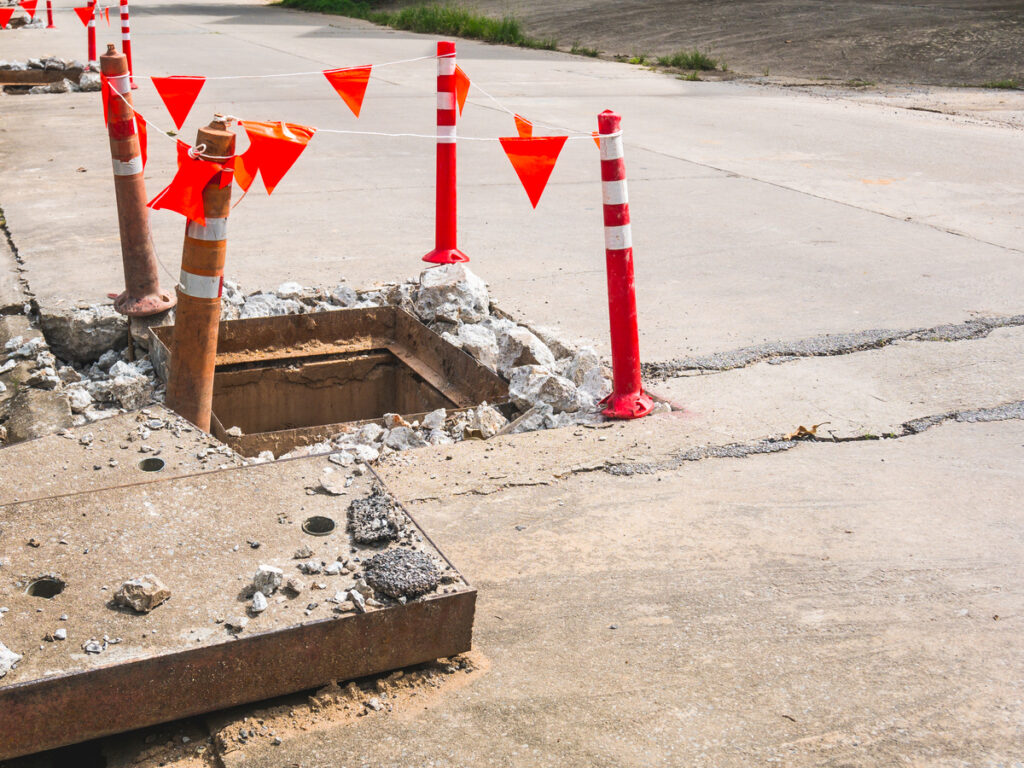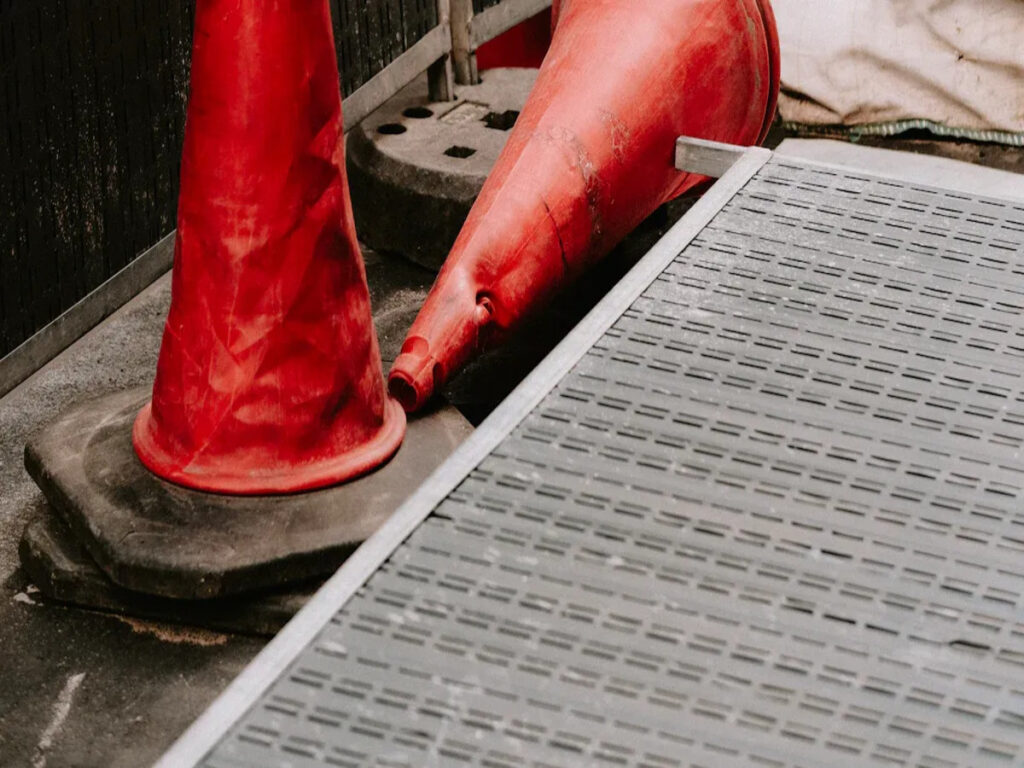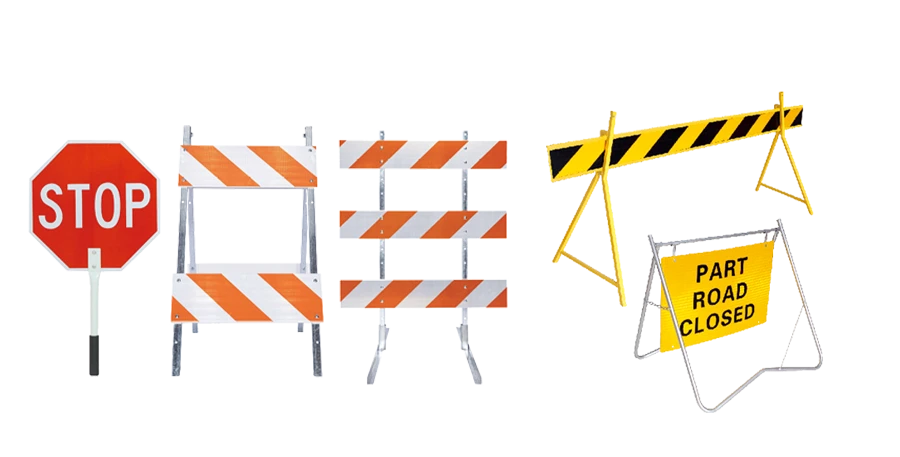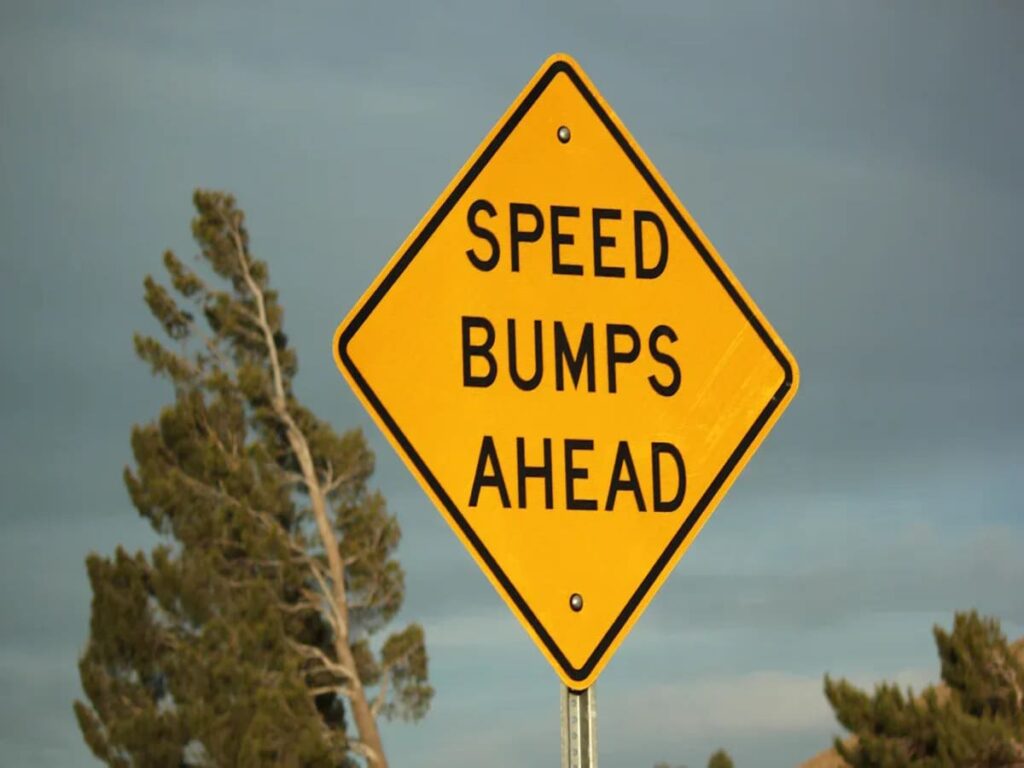
Speed tables and speed humps are essential tools for slowing down cars and enhancing road safety for everyone. When considering speed table vs speed hump, it’s important to note that speed humps are particularly effective at significantly reducing vehicle speeds in residential neighborhoods. इसके विपरीत, speed tables allow for a smoother transition for vehicles on busier or emergency routes. The necessity of these measures is underscored by the crash statistics below:
| क्षेत्र प्रकार | Percentage of Crash Deaths Involving Speeding (2023) |
|---|---|
| ग्रामीण | 28% |
| शहरी | 30% |
Understanding the differences between speed tables and speed humps will help you choose the most suitable option for your project.
पर ऑप्टट्रैफ़िक, we offer a comprehensive range of यातायात सुरक्षा उत्पाद that work alongside speed tables and humps to further enhance road safety. From pedestrian crossing signs to traffic cones, barrier systems, and reflective road markings, our products are designed to support and complement your traffic calming initiatives.
चाबी छीनना
- Speed humps work well in places where people live. They make cars go much slower. This helps keep people walking and biking safe.
- Speed tables let cars drive over them more smoothly. They are good for busy roads and for emergency vehicles. Bigger cars can go faster over them.
- इस बारे में सोचें कि आपके प्रोजेक्ट को क्या चाहिए. Use speed humps in calm neighborhoods. Use speed tables near schools or busy roads to keep everyone safe.
- Always look at the local rules first. It is important to put traffic calming devices in the right way. They must be easy to see to work well and keep people safe.
Traffic Calming Devices Overview
What are Speed Tables and Speed Humps?
Speed tables and speed humps are both traffic calming devices designed to reduce vehicle speeds and improve road safety. A speed table is a long, flat-topped bump that stretches across the entire road, with gentle slopes on either side. This design allows vehicles to gradually rise and fall as they cross, providing a smooth experience while still slowing down traffic. इसके विपरीत, a speed hump is a more rounded, elevated structure with a steeper rise. Drivers are required to slow down more abruptly when crossing a speed hump, making it more effective in forcing vehicles to reduce speed. Both devices are used in different settings based on the desired level of speed reduction.
Why Speed Control is Essential for Road Safety
You need traffic calming devices to keep roads safe. When cars move too fast, दुर्घटनाएं अधिक बार होती हैं. Speed tables and speed humps force drivers to slow down. This gives everyone more time to react and helps prevent crashes. Slower speeds also protect people walking or biking. By using the right traffic calming devices, you can improve safety for drivers, पैदल चलने वालों, और साइकिल चालक. You help create a safer community for all.
Speed Table vs Speed Hump: A Comparison
Key Design Differences Between Speed Tables and Speed Humps
When you look at speed table vs speed hump, you will notice clear design differences. A speed table has a long, flat top. It usually measures 22 feet long and 6 इंच ऊंचा. The gentle slopes on each side help cars move smoothly. A speed hump, वहीं दूसरी ओर, has a rounded shape. It rises quickly and drops off just as fast. Most speed humps measure 12 को 14 feet long and 3 को 4 इंच ऊंचा.
Here is a simple table to help you compare:
| विशेषता | गति -तालिका | स्पीड कूबड़ |
|---|---|---|
| आकार | Flat top | Rounded |
| लंबाई | 22 पैर | 12-14 पैर |
| ऊंचाई | 6 इंच | 3-4 इंच |
| Slope | Gentle | Steep |
बख्शीश: When you choose between speed table vs speed hump, always check the road type and traffic needs.
Effectiveness of Speed Tables vs Speed Humps in Traffic Calming
You want to know which device works better. The effectiveness of speed table vs speed hump depends on your goals. Speed humps force drivers to slow down more. They work best when you need strong speed control. You often see them in quiet neighborhoods. The effectiveness of speed humps shows in lower speeds and fewer accidents.
Speed tables offer a different kind of effectiveness. They slow cars, but not as sharply. Drivers feel less discomfort. Emergency vehicles can cross speed tables faster. This makes speed tables a good choice for busy streets or routes used by fire trucks and ambulances. The effectiveness of speed table vs speed hump also shows in how drivers behave. Speed tables keep traffic moving while still improving safety.
When you compare the effectiveness of speed table vs speed hump, think about your project needs. If you want to slow cars a lot, pick speed humps. If you want smoother traffic and good safety, speed tables may work better.
Understanding Speed Humps
How Speed Humps Work: Structure and Function
You may see speed bumps and speed humps on many local roads. Speed humps have a rounded shape and a gentle rise. When you drive over them, you must slow down. The design of speed humps makes them different from speed bumps. Speed humps are longer and less steep than speed bumps. This helps reduce speed without causing too much discomfort.
Here is a table that shows the main features of speed humps and how they work:
| विशेषता | कीमत | Effect on Speed |
|---|---|---|
| Radius of Curvature (आर) | 15 एम | Optimizes speed reduction |
| Length of Main CSH (एल) | 5 मी और 6 एम | Enhances driver comfort |
| Objective Speed (Vb) | 20-25 किमी/घंटा, 30-35 किमी/घंटा | Validates effectiveness |
Speed bumps and speed humps both slow cars, but speed humps do this over a longer distance. You will notice that speed humps keep traffic moving at a safe pace.
तथापि, it’s crucial to pair speed humps with proper speed hump signs to maximize their effectiveness and prevent potential safety risks. Installing speed humps without clear signage can lead to confusion and dangerous driving behavior. To learn more about the importance of proper signage and how the absence of these signs can pose serious safety risks, हमारे ब्लॉग की जाँच करें: क्यों गति कूबड़ के बिना गति कूबड़ स्थापित करना सुरक्षा जोखिम पैदा करता है: From Deficiencies to Solutions.
Advantages and Disadvantages of Speed Humps
When you compare speed bumps and speed humps, you will find both have pros and cons. Here is a table to help you see the main points:
| लाभ | नुकसान |
|---|---|
| Traffic calming | Discomfort for drivers |
| Enhanced safety | Increased noise levels |
| Reduced vehicle speed | Potential damage to vehicles |
टिप्पणी: Speed bumps and speed humps both improve safety, but you should consider the possible noise and discomfort for drivers.
Speed bumps and speed humps can sometimes cause drivers to slow down too much or create extra noise. You should weigh these factors when planning your project.
When to Use Speed Humps: सबसे अच्छा उपयोग मामले
You will find speed bumps and speed humps most often in places where you want cars to move slowly. Urban planners recommend speed humps for:
- Residential neighborhoods
- Low-volume, कम गति वाली सड़कें
Speed bumps and speed humps work best where you want to protect children and families. You often see them near parks, स्कूलों, और खेल के मैदान. Speed bumps and speed humps are not for busy main roads or places where emergency vehicles need to move quickly. You should use speed bumps and speed humps where you want to keep speeds low and improve safety for everyone.
Understanding Speed Tables
Speed Table Design and Functionality
Speed tables look different from other traffic calming devices. They have a flat top that goes across the whole road. Most are made from asphalt or rubber. The flat part is long enough for a car to fit on top. This design lets cars drive over them with less bumping than a speed hump. You can see their main features in the table below:
| पहलू | विवरण |
|---|---|
| डिज़ाइन | Asphalt or rubber mound covering the full width of the roadway |
| Modification | Flat top, modified from speed humps |
| Flat Top Length | Long enough for a passenger car’s wheelbase |
| लाभ | Larger vehicles cross with minimal disruption; slows vehicles effectively |
| नुकसान | May delay emergency vehicles; can cause noise; may impact drainage |
| प्रभावशीलता | 28% reduction in 85th percentile speed and auto collisions |
| Appropriateness | Suitable for roads matching posted speed limits and heavy vehicle use |
Advantages and Disadvantages of Speed Tables
Speed tables have many good points for your project. They give drivers and emergency vehicles a smoother ride. When used as raised crosswalks, they help drivers see people walking. Rubber speed tables are easy to see and follow ADA rules. This makes them good for places with lots of people walking. But drivers might not slow down as much as they do for speed humps. Some problems are delays for emergency vehicles, more noise, and water drainage issues.
| Benefit/Drawback | विवरण |
|---|---|
| Smoother Transition | Vehicles experience a smoother ride than with speed humps |
| Increased Pedestrian Safety | Raised crosswalks improve driver yielding |
| दृश्यता और अनुपालन | Rubber versions are highly visible and ADA-compliant |
| Reduced Speeding | Drivers may not slow down as much as with speed humps |
बख्शीश: Think about both the good and bad sides before you pick speed tables for your project.
Best Scenarios for Speed Table Application
Speed tables work best in certain places. They are great for collector streets and emergency routes. You should use them where cars go between 25 और 45 मील प्रति घंटा. Do not use them on streets wider than 50 पैर. Good lighting and clear views help drivers spot them early. Many cities put speed tables on neighborhood streets with a 25 एमपीएच गति सीमा. They help keep traffic safe and smooth.
- Collector streets and emergency routes
- Residential streets with 25 एमपीएच गति सीमा
- Areas needing safer pedestrian crossings
- Roads with good lighting and visibility
टिप्पणी: Pick speed tables instead of speed humps if you want smoother driving and steady traffic flow.
Key Factors to Consider When Choosing Traffic Calming Devices
How Traffic and Road Type Affect Your Choice
You need to pick the right device for each road. Speed humps, speed tables, and raised crosswalks work well on neighborhood streets. Arterial roads use chicanes, traffic circles, and narrower lanes. The table below shows which device fits each road type:
| Traffic Calming Solution | विवरण | Suitable for |
|---|---|---|
| स्पीड कूबड़ | Raised sections that slow drivers | आवासीय सड़कें |
| Speed Tables | Wider, flatter, span the roadway | आवासीय सड़कें |
| बाधकों | Create a winding effect | Arterial Roads |
| Traffic Circles | Circular intersections | Arterial Roads |
| Narrowing Roadways | Reduce lane width | Arterial Roads |
बख्शीश: Pick a device that matches your road’s speed and traffic. This helps you save money and get good results.
Ensuring Emergency Access with Traffic Calming Measures
You must make sure emergency vehicles can get through fast. Here are some ways to help:
- Work with emergency services to plan where to put devices.
- Use gentle slopes on speed humps to help emergency vehicles.
- Install speed cushions so fire trucks and ambulances can pass easily.
These steps help keep people safe and let emergency vehicles move quickly. You also avoid extra costs from delays.
Pedestrian Safety and Traffic Calming Solutions
Traffic calming devices help keep people walking safe. Speed tables can slow cars by 10-15 mph in school zones and neighborhoods. Speed humps also slow cars but may feel bumpier. The table below shows how each device works:
| Traffic Calming Device | Effectiveness in Reducing Speed | Areas of Use |
|---|---|---|
| Speed Tables | Reduces speed by 10-15 मील प्रति घंटा | स्कूल क्षेत्र, आवासिय क्षेत्र |
| स्पीड कूबड़ | Effective but more disruptive | Residential neighborhoods, स्कूल क्षेत्र, पार्किंग स्थल |
You make your area safer when you choose the right device for each place.
Noise Considerations and Community Impact
Think about noise and how your choice affects neighbors. Speed humps can make more noise as cars slow down and speed up. Speed tables give a smoother ride and make less noise. Picking the best option helps keep everyone happy.
Installation and Maintenance Costs of Speed Tables and Speed Humps
You want a solution that does not cost too much. Speed humps can cost up to $7,000 each to install. Maintenance costs can go up, खासकर खराब मौसम में. If people want them removed, it costs more. Speed tables may cost more at first but might need less fixing later.
टिप्पणी: Always check both installation and maintenance costs. This helps you find the best traffic calming device for your budget.
Legal and Safety Considerations for Traffic Calming Devices
MUTCD Guidelines for Speed Tables and Speed Humps
You have to follow the समान यातायात नियंत्रण उपकरणों पर मैनुअल (MUTCD) rules when putting in speed tables or speed humps. The MUTCD gives clear instructions for how to mark and size these devices. These rules help drivers notice the traffic calming device ahead. उदाहरण के लिए, you must use white ‘v’ shaped markings in each lane. These markings point the same way as the traffic and help drivers see the device sooner. Each marking needs to be 12 inches wide and placed in the middle of a 12-foot lane. Speed humps should be 6 feet deep on both sides of a crosswalk or speed table, which is usually 10 feet deep.
Here is a simple guide to the main MUTCD rules:
| मांग | विवरण |
|---|---|
| चिह्नों | White ‘v’ shaped markings in each lane, 12 इंच चौड़ा |
| DIMENSIONS | Speed humps: 6 ft deep on each side; speed table area: 10 ft deep |
| Travel Lanes | Each lane should be 12 ft wide |
| Marking Width | 12-inch thick white lines |
| प्लेसमेंट | ‘V’ markings centered in each lane, pointing with traffic flow |
You also need to check your local laws before putting in these devices. Speed humps can only go on streets with a speed limit of 30 मील प्रति घंटे या उससे कम. You cannot put them where water drains down the middle, on steep hills, or on sharp turns. Streets used by buses, ट्रक, or emergency vehicles are not good for speed humps. Always make sure drivers can see the device from at least 250 फ़ुट दूर.
Ensuring Driver and Pedestrian Safety with Traffic Calming Measures
You want everyone to stay safe when you add traffic calming devices. These devices slow down cars and help stop crashes. Studies show that speed humps and speed tables lower the number of accidents, especially those with kids. Pedestrian safety gets better because drivers slow down and pay more attention. More people walk or bike when they feel safer on the street.
Here are some results after putting in traffic calming devices:
- Lower traffic speeds
- कम दुर्घटनाएँ
- Safer crossings for people walking and biking
- Fewer crashes between cars and people, especially near schools and parks
बख्शीश: Always check how far drivers can see and how far apart you put the devices. Put devices at least 500 feet apart and do not use them where it is hard to see.
You help make your community safer when you follow these rules and use the right markings and placement.
वास्तविक दुनिया के अनुप्रयोग और केस स्टडी
मामले का अध्ययन: The Impact of Speed Humps on Traffic
Many studies show how speed humps change traffic. When speed humps are put on a street, drivers act differently. Here are some results from real projects:
- Vehicle speeds dropped between 4% और 42% after speed humps were added. Drivers slow down before the humps and speed up again after.
- Drivers start to slow down about 160 को 205 feet before a hump. They go back to normal speed 60 को 85 feet after passing.
- एक अध्ययन से पता चला कि 37.5% drop in crashes with injuries after speed humps were used.
- Another report found all crashes went down by 20% and pedestrian crashes at mid-blocks dropped by 41%.
- Some projects saw all crashes fall by 72% after speed humps were put in.
- Speed humps help keep people safe and lower crash numbers.
मामले का अध्ययन: How Speed Tables Improve Traffic Flow
Speed tables also change how cars move in busy places. You often see speed tables on roads with lots of cars or near schools. Speed tables slow cars down but do not stop traffic. Emergency vehicles can cross speed tables faster than speed humps, so traffic keeps moving. Raised crosswalks made as speed tables help drivers see people walking. This makes roads safer and keeps cars moving smoothly. Many cities use speed tables to stop speeding but let buses and fire trucks go through easily.
Key Lessons from Real-World Traffic Calming Implementations
Urban planners gain valuable insights from traffic calming projects. Proper design, रफ़्तार, and location choices are crucial when implementing speed humps or speed tables. Below are key lessons learned from these projects:
| Lesson Learned | विवरण |
|---|---|
| Design Considerations | Speed humps with gentle slopes and smooth tops are safer for cyclists, reducing discomfort and risks. |
| Speed Limitations | Cyclists typically don’t exceed 25 mph on neighborhood streets, so humps of 3-4 inches are safe. |
| जगह | Speed humps should be placed away from corners to prevent issues for turning cyclists and vehicles. |
By applying these lessons, road safety improves for drivers, साइकिल चालकों, और पैदल यात्री. Well-planned traffic calming ensures smoother traffic flow, enhanced safety, and ease of access for emergency vehicles, पूरे समुदाय को लाभान्वित करना.
How to Choose the Right Traffic Calming Solution
Step-by-Step Guide to Selecting Speed Tables or Speed Humps
You want to pick the best solutions for your road project. Start by looking at real data and listening to what people in your area say. अगला, check the design of your road and see where the risks are highest. Match the right solutions to the problems you find. Begin with small changes, measure how they work, and then expand if needed.
Here is a simple step-by-step guide:
- Gather feedback from residents and collect traffic data.
- Review the road layout and spot places where speeding is a problem.
- Choose solutions that fit the road type and traffic needs.
- Test your solutions on a small part of the road.
- Track results and adjust your plan as needed.
Many cities use decision-making tools to help choose the right solutions. The most popular method is a point scoring system. You can see how often each method is used in the table below:
| Prioritization Method | Percentage of Projects |
|---|---|
| Point Scoring System | 72% |
| Engineering Judgments | 14% |
| Other Criteria | 24% |
Interactive Flowchart for Choosing Between Speed Tables and Speed Humps
You can use a flowchart to help decide which solutions work best for your road. Start by asking if your road is used by emergency vehicles or buses. यदि हां, speed tables may be better. If your road is in a quiet neighborhood, speed humps might be the right choice. Look at the chart below to see how different decision methods are used:
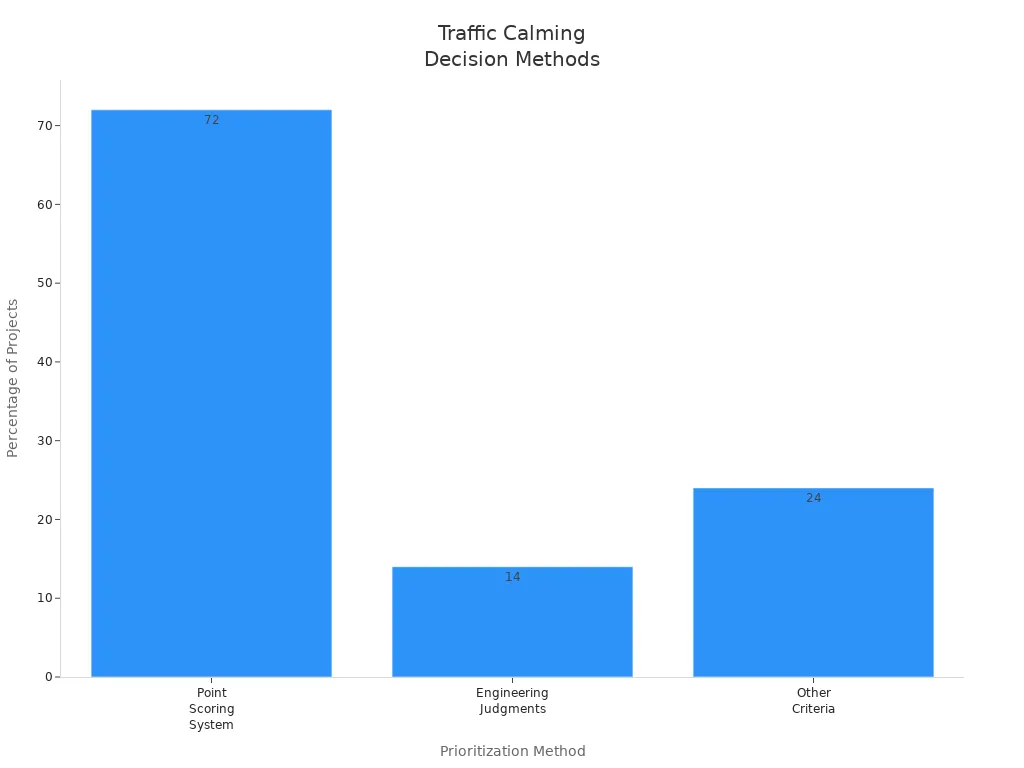
बख्शीश: Always match your solutions to the needs of your road and community. The right choice keeps everyone safe and traffic flowing smoothly.
You can see the main differences between speed tables and speed humps in the table below:
| विशेषता | स्पीड कूबड़ | Speed Tables |
|---|---|---|
| लंबाई | 12-14 पैर | 22 पैर |
| गति में कमी | 15-20 मील प्रति घंटा | 25-35 मील प्रति घंटा |
| सबसे अच्छा उपयोग | Residential areas | स्कूल क्षेत्र, सार्वजनिक सड़कें |
For neighborhood safety, use speed humps in quiet streets and speed tables near schools or busy roads. Experts recommend combining both for better results. If your project is complex, reach out to traffic consultants or engineering firms for advice.
- Use clear signs and markings for school zones.
- Place devices every 300-600 feet for best effect.
अक्सर पूछे जाने वाले प्रश्न
What is the main difference between speed tables and speed humps?
You will notice speed tables have a flat top and gentle slopes. Speed humps have a rounded shape and steeper rise. The design and placement of each device affect how much they slow down vehicles.
Where should I install speed humps in neighborhoods?
You should use speed humps on quiet streets in neighborhoods where you want to reduce speeding. Good design and placement help keep children and families safe, especially near parks and schools.
Are speed tables better for pedestrian crossings?
हाँ, speed tables work well for pedestrian crossings. Their flat surface gives people a safer place to walk. Drivers see the crossing more easily and slow down as they approach.
What are the disadvantages of speed tables?
While speed tables are effective at slowing down traffic, they do have some disadvantages. One of the key drawbacks is that they can be uncomfortable for drivers, especially at higher speeds, as the flat top and gentle slopes may still cause vehicles to experience a slight bump. इसके अतिरिक्त, speed tables may not be suitable for areas with high-speed traffic or major roads, as they could disrupt traffic flow and increase congestion. आगे, emergency vehicles may face challenges navigating speed tables, particularly if they need to maintain speed for quick response times. It’s important to assess your specific road conditions before deciding if a speed table is the right solution.
What are the downsides of speed humps?
Speed humps, while highly effective at reducing speed, also come with some disadvantages. The steeper rise and rounded shape can cause significant discomfort for drivers, especially at higher speeds or in vehicles with lower suspensions. This discomfort can lead to complaints from residents or regular drivers. इसके अतिरिक्त, speed humps can create challenges for emergency vehicles that need to maintain higher speeds for fast response times. अंत में, they may lead to increased noise and wear-and-tear on vehicles, which could affect community satisfaction, especially in residential areas. As with any traffic calming device, it’s crucial to consider the specific needs of your road and community.
How do I choose the right traffic calming device?
When deciding between a speed table vs speed hump, consider factors such as traffic volume, वाहन की गति, and the specific use of your road. Speed tables are ideal for areas with moderate traffic and where a gradual speed reduction is needed without disrupting the flow of traffic. They are particularly effective in neighborhoods or areas near schools. वहीं दूसरी ओर, speed humps are better suited for areas with lower speeds and higher traffic volume, where a more pronounced speed reduction is necessary.
इसके अतिरिक्त, take into account emergency access needs, as some devices may be more difficult for emergency vehicles to navigate. Carefully review the design and placement of each device to ensure it delivers the desired effect while balancing safety and accessibility.


